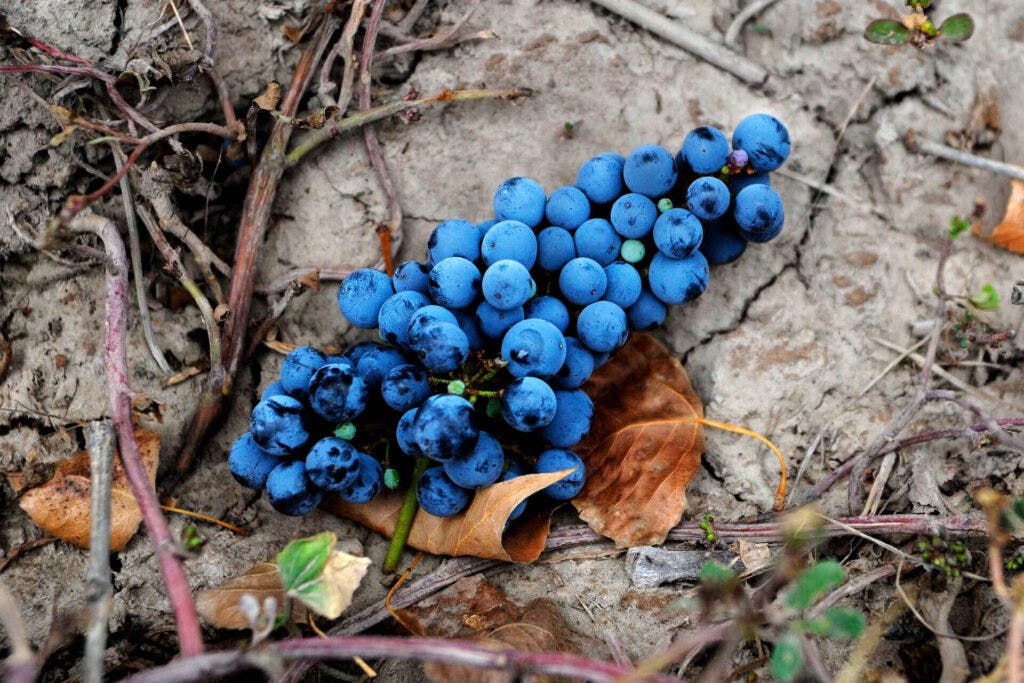Argentina’s grape harvest might be at a record-setting low this year. The country’s National Institute of Viticulture estimates a 21% decrease in production from last year, while some local producers have lost more than 50% of their grapes.
Over the last 12 years, the average grape harvest has been around 5.1 billion pounds. But as of March 26, reports from the National Institute of Viticulture showed that about 2.6 billion pounds of grapes had been harvested. The same government organization estimated that a total of 3.3 billion pounds will be picked by the end of the harvest, which is only a few weeks away. If that is the case, this year will make the smallest harvest ever registered in Argentina since 1960.
Winemakers explain the causes and the aftermath of this disadvantageous scenario, in which they say costs and stocks of wine will be impacted.
The Causes of a Record-Low Harvest
A few factors contributed to this decrease in grape harvest. Marcelo Belmonte, wine director at Bodega Trapiche, says that the late spring frost during 2022 had the greatest impact. On October 31, and November 1, a polar cold front dropped temperatures to 23–26℉.
“This frost affected the vines when they were in an advanced growing stage, not allowing the plant to grow secondary and tertiary buds,” says Belmonte. “Even in vines with no visible physical damage the flower clusters were affected and produced smaller and lighter grape bunches.”
Vines also had less access to water for irrigation due to low snow accumulation in the Andes Mountains that feed the rivers and other freshwater sources. “Less access to water influenced the weight of the grape bunches,” says Belmonte. In other words, when vines don’t receive enough water, the berries are smaller, resulting in less wine.
Andrea Ferreyra, winemaker at Finca La Celia, adds, “This was the hottest summer in Argentina in the last 117 years. Frost, high temperatures and lack of rain during veraison have resulted in small grape berries and heterogeneous bunches.”
Beyond climate threats, other factors are to blame for the decrease in harvest and final wine production in the last couple of years. “This is due to a decrease in [acres] under vine, especially high-yield Criolla, and fewer producers replanting vines that have completed their life cycle,” says Belmonte.
Ferreyra adds, “Since 2014, land that was once planted with vines has been lost or abandoned. There are a few reasons that explain this trend. These are low profitability, lack of investment and low yields that make it impossible for some growers to stay in business.”
The Resulting Damage
Finca La Celia sources grapes from vineyards in the Uco Valley. Ferreyra says that 50% of their grapes have been lost. Since the yields were low, the winery has produced 62% less wine than last year. “In our vineyards, the damage was evident as soon as the frost hit. [The Uco Valley’s] Paraje Altamira was one of the regions with the most damage.”
Trapiche has 8,648 acres in Argentina’s main wine regions from Patagonia to Salta. Belmonte says they have lost about 15% of grapes compared to 2022. However, not every region suffered the same. He points out that “the damage caused to the vines by the frost in Argentina depends on several factors when the event occurred: the phenological stage of the vine, grape variety, training system, altitude and the humidity in the soils or whether there was grass in between the rows.”
Belmonte describes that regarding Trapiche’s vineyards “the most affected region was Chapadmalal, followed by Neuquén, Mendoza and San Juan. In the Calchaquí Valleys, the yields were higher than the previous year.”
Horacio Bibiloni, head winemaker at Bodega Humberto Canale in the Alto Valle of Río Negro in Patagonia, says, “The late Spring frost is the main cause of the 45% loss we had this year.” He explains that white grapes and Pinot Noir took the hardest hit. “We have lost about 50% of these grapes.”
The Impact on Quality, Prices and Stock

Winemakers expect that the quality of this year’s wines won’t be negatively impacted.
“Most of our wines are still fermenting, but we see great quality potential,” says Bibiloni.
On the same note, Belmonte says, “Wines from this harvest show deep color and fine tannins. [The] must from high altitude regions has good acidity, in general. We are positive about the evolution in quality in wines from this vintage.”
Ferreyra adds, “We estimate the quality will be good. The first grapes that were harvested showed a great balance between sugar and organic acids due to an early start of the harvest, resulting in interesting wines.”
Regarding costs, she explains that less wine will be produced, but the production costs will remain the same. As a result, she says, “We have expensive grapes with high vinification costs.”
Belmonte adds, “Without a doubt, this will negatively impact the country’s competitiveness, influencing mainly entry-level wines in international markets and table wines in the local market.”
Both winemakers agree that the stocks will be lower than normal. However, Ferreyra points out that wine sales in the local and international markets are dropping, and that bulk wine is following the same fate. Because of this, she says, “The low stock and a decrease in wine production will be balanced by less demand from the markets.”
In a country with high inflation, which increases production costs, and exchange rate issues, dealing with frost, drought and the loss of vineyards sums up the adversities that winemakers must live with to be competitive in international markets. Still, in a difficult year like this one they remain optimistic about the quality of their wines.
Last Updated: June 6, 2023

















